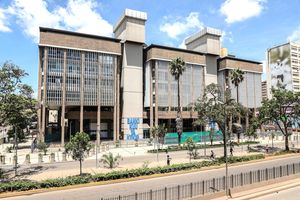
Kenya has gone to the market to borrow $2 billion to be used in repaying the $2 billion Eurobond that is maturing in June.
This is my suggestion to the government on the new Eurobond we have issued. Please, avoid the temptation of taking more than $2 billion (about Sh316 billion) from this issue.
As at writing this column, full information on the level of subscriptions for the new Eurobond was not out. But going by the level of response and subscription we witnessed in the recent issues by Cote d’Ivoire and Benin, we all expect a high level of subscription for the Kenya issue.
The other day, Cote d’Ivoire went to the market asking to borrow $2.6 billion. The subscription was at a massive $8 billion. They resisted the urge to take more and only took what they had asked for in the first place. Benin also resisted the temptation and only borrowed the $650 million they had asked for.
We have gone to the market to borrow $2 billion, which we want to use to repay the $2 billion Eurobond that is maturing in June. Stick to that figure even if the issue is ten times oversubscribed.
When you see an oversubscription in paper issued by a broke African government like ours and as we have witnessed recently, do not be fooled into believing that oversubscription is a measure of confidence in that country. It’s about the greed by European wealth fund managers.
Eurobond borrowing craze
Nobel laureate Joseph Stiglitz could not have described the Eurobond borrowing craze African countries are witnessing today more aptly. He attributed the Eurobond craze to ‘‘short-sighted financial markets, working with short-sighted governments, laying the groundwork for the world’s next debt crisis’’.
Kenya is stuck on the external debt treadmill and is firmly in the grip of what is now popularly described as ‘Eurobondage’. This is how it all started. You issue a 10-year $2 billion in June 2014 that cost the taxpayers $200 billion at the dollar rate that was prevailing at that time.
In February 2024, you repay Sh320 billion with a new $2 billion Eurobond in the context of a rapidly depreciating currency. In February 2034, you will pay trillions of shillings to repay the same loan you first took in 2014.
A friend and analyst argue that the ordinary taxpayer has been hoisted on a financial bicycle treadmill that force-feeds the global capital markets with immense sums of taxpayer money. It is a classic case of borrowing from Peter to pay Paul. Mark you, the proceeds of the Eurobond we have borrowed will not be used to build roads, bridges or ports. And, as a matter of fact, the money is not going to land in Nairobi because most of the funds will be flowing directly to asset managers and fund managers, many of whom are based in New York.
In reality, what is happening is that asset managers based in Western capitals will simply be swapping Kenya’s Eurobond of June 2024 with new Eurobonds of 2034. The taxpayer is not going to see a single dime of the money we are borrowing. Let me explain it simply so that even readers who are not familiar with what goes on in the rarefied world of high finance can join the conversation.
First, you borrowed money from Mr Kimani in 2014. When the time for paying calls, you tell him: I am going to pay you once I borrow from Mr Onyango. Then there is this detail in the prospectus that offended my nationalistic instincts. ‘The offer is not being made, directly or indirectly, to the general public in the Republic of Kenya’.
Domestic investors
Why have we excluded Kenya’s and domestic residents from this offer? The government may well have a sound economic argument for excluding locals. But let us at all times remember that it is the domestic investors and residents – not foreigners – that have been keeping the government afloat.
In reality, what the government has done with the new Eurobond issue is not different from the domestic bond switches which were effected in 2022 by the former governor of the Central Bank of Kenya, Dr Patrick Njoroge, when he offered to exchange maturing local debt with what the wonks call ‘higher for longer bonds’; in other words, higher interest for longer tenors.
Yet, the circumstances were totally different. The Eurobond is denominated in foreign currency subject to foreign jurisdiction regulatory risks – and will be listed on Ireland and London Exchanges. We have very few levers to invoke in this space.
But worse, the new Eurobond has come against a backdrop of a highly depreciating exchange rate. The steady depreciation of the shilling may result in spiralling repayment costs for the taxpayer.
The government had run out of nearly all options. The pressure emanating from uncertainties over whether or not we were going to repay the maturing 2014 Eurobond is bound to subside. We are not yet out of the woods because Kenya’s debt situation will continue to pile pressure on government finances.











